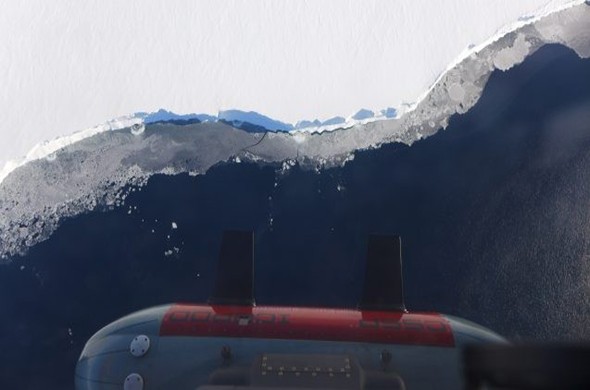Ice shelves are massive expanses of floating ice that slow down the flow of Antarctic ice into the ocean. ROSETTA-Ice collected data from the massive Ross Ice Shelf, which helps slow the flow of about 20 percent of Antarctica’s grounded ice into the ocean — equivalent to 38 feet of global sea level rise. Antarctica’s ice is already melting at an accelerating rate. Predicting how the ice shelf will change as the planet continues to warm requires understanding the complex ways in which the ice, ocean, atmosphere and geology interact with each other.
To gain a better understanding of these processes, the multidisciplinary ROSETTA-Ice team approached the Ross Ice Shelf much like explorers visiting a new planet for the first time. The team faced the key challenge of how to gather data from a region the size of Spain, and where ice that is frequently more than a thousand feet thick prevents more traditional ship-based surveys of the seabed. The solution was IcePod, a first-of-its kind system designed to collect high-resolution data across the polar regions. IcePod was developed at Columbia University’s Lamont-Doherty Earth Observatory and mounted on a cargo plane. Its instruments measure ice shelf height, thickness and internal structure, and the magnetic and gravity signal of the underlying rock.
Each time the team flew across the ice shelf, the IcePod’s magnetometer (which measures Earth’s magnetic field) showed a flat and almost unchanging signal. That is, until halfway across the ice shelf, when the instrument came alive, displaying large variations, much like the heartbeat on a cardiogram. When the team mapped their results, it became clear that this “heartbeat” always appeared in the middle of the ice shelf, identifying a previously unmapped segment of the geologic boundary between East and West Antarctica.
Read more about the Ice Shelves on State of the Planet, a blog from The Earth Institute.
